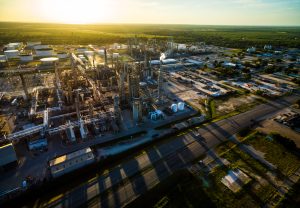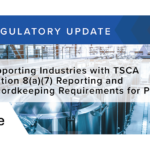
Lawton Phase 2 Environmental Site Assessments are a crucial step in ensuring the protection and sustainability of our environment. By conducting comprehensive assessments, we are able to identify potential environmental hazards and take appropriate action to minimize their impact. In this article, we will explore the importance of Phase 2 Environmental Site Assessments, the key components involved, the process of conducting assessments in Lawton, the regulatory framework surrounding these assessments, as well as the challenges and solutions that arise in this field. Additionally, we will discuss the future of environmental site assessments in Lawton, including technological advancements and policy changes that may shape their evolution.
Understanding the Importance of Phase 2 Environmental Site Assessments
Phase 2 Environmental Site Assessments play a critical role in safeguarding the environment and public health. These assessments are conducted after a Phase 1 assessment indicates potential environmental concerns at a site. By performing a Phase 2 assessment, environmental consultants are able to gather vital data about the site and determine the extent of contamination, if any. This information is crucial for decision-making processes related to development, remediation, and protection of environmental resources.
The Role of Phase 2 Assessments in Environmental Protection
Phase 2 Environmental Site Assessments serve as an essential tool in identifying and mitigating potential environmental hazards. Through detailed investigations and testing, these assessments provide valuable information necessary for making informed decisions about site usage and ensuring compliance with environmental regulations. By identifying sources of contamination and evaluating their potential risks, Phase 2 assessments help protect human health, wildlife, and the surrounding ecosystems.
Key Components of a Phase 2 Environmental Site Assessment
A Phase 2 Environmental Site Assessment consists of several important components. Firstly, an initial site inspection and data collection are conducted to determine the specific areas warranting further investigation. This process involves a thorough visual inspection, as well as the collection of soil, water, and air samples.
Next, laboratory testing and analysis are carried out on the collected samples to identify and quantify any potential contaminants present. Analytical techniques such as gas chromatography and mass spectrometry play a vital role in this phase, providing accurate and reliable results.
Once the laboratory analysis is complete, a risk assessment is undertaken to evaluate the potential impact of identified contaminants on human health and the environment. This assessment allows for the development of appropriate remediation plans or other necessary actions. Finally, a comprehensive report is prepared to document the findings and recommendations arising from the assessment.
The Process of Conducting a Phase 2 Environmental Site Assessment in Lawton
Conducting a Phase 2 Environmental Site Assessment in Lawton involves a systematic approach that ensures comprehensive investigation and accurate results. The process typically begins with an initial site inspection and data collection.
Initial Site Inspection and Data Collection
During the initial site inspection, environmental consultants thoroughly examine the physical aspects of the site, including any buildings, structures, or infrastructure present. Informed by their expertise, they identify potential areas of contamination or activity that may necessitate further investigation.
Once the inspection is complete, data collection commences. This involves the collection of samples from various media, such as soil, groundwater, surface water, and air. The samples are carefully collected and handled to ensure the integrity of the data obtained.
Laboratory Testing and Analysis
After the samples are collected, they are sent to an accredited laboratory for detailed testing and analysis. The laboratory utilizes state-of-the-art equipment and techniques to determine the presence and concentration of contaminants in the samples.
The laboratory testing process involves various methods, including chemical and physical analyses, as well as advanced techniques such as molecular biology, to identify contaminants. The results obtained from the analysis provide a clear picture of the site’s environmental conditions, aiding in risk assessment and subsequent decision-making.
Risk Assessment and Reporting
Following the laboratory testing and analysis, a comprehensive risk assessment is conducted. This assessment evaluates the potential risks associated with the identified contaminants, taking into account exposure pathways and receptor populations. The risk assessment provides a scientific basis for decision-making, guiding subsequent actions such as remediation or prevention measures.
Finally, a detailed report is prepared to document the findings, methodology, and recommendations arising from the Phase 2 Environmental Site Assessment. This report serves as a crucial resource for site owners, developers, and regulatory bodies, providing essential information for future land use decisions and environmental management.
Regulatory Framework for Phase 2 Environmental Site Assessments
Phase 2 Environmental Site Assessments in Lawton are conducted in accordance with federal and state environmental laws, which provide the legal framework for ensuring environmental protection and sustainability.
Federal and State Environmental Laws
At the federal level, the Environmental Protection Agency (EPA) serves as the primary regulatory authority governing environmental matters. The EPA has established regulations and guidelines that outline the requirements for conducting Phase 2 Environmental Site Assessments, ensuring consistency and proper environmental management across the country.
In addition to federal laws, individual states have their own environmental legislation that supplements and reinforces these federal regulations. These state-specific laws help tailor environmental protection measures to local conditions and facilitate effective compliance and enforcement efforts.
Compliance and Enforcement in Lawton
In Lawton, compliance with environmental laws is a critical aspect of conducting Phase 2 Environmental Site Assessments. Regulatory bodies responsible for enforcing environmental regulations ensure that assessments are conducted in accordance with established guidelines and standards.
These regulatory bodies may conduct inspections, audits, and reviews to verify compliance and take appropriate action in cases of non-compliance. By upholding compliance and enforcement measures, Lawton ensures that responsible parties are held accountable for their actions, protecting the environment and public health.
Challenges and Solutions in Phase 2 Environmental Site Assessments
While Phase 2 Environmental Site Assessments provide valuable information and contribute to environmental protection, there are several challenges that can arise during the assessment process. Addressing these challenges is essential to ensure the accuracy, efficiency, and reliability of the assessments.
Common Obstacles in Conducting Assessments
One common challenge is the presence of complex and diverse contaminants. Sites may contain a combination of contaminants, each requiring specialized testing and analysis methods. Environmental consultants must possess the necessary expertise and access to advanced laboratory facilities to accurately identify and quantify these contaminants.
Another challenge is the spatial variability of contaminants. Contaminant distribution can vary within a site, requiring multiple sampling locations to ensure representative data. This challenge can be addressed through proper sampling design and statistical analysis techniques, which allow for reliable interpretation of results.
Innovative Approaches to Overcome Challenges
To overcome these challenges, innovative approaches are being adopted in Phase 2 Environmental Site Assessments. Advanced analytical techniques, such as high-resolution site characterization, provide detailed information about contaminant distribution and potential migration pathways.
Additionally, technological advancements in field sampling equipment and analytical instrumentation have improved the efficiency and accuracy of assessments. Real-time data collection and analysis enable quicker decision-making and more precise identification of contaminants.
Collaboration among stakeholders, including environmental consultants, regulatory bodies, and site owners, also plays a vital role in overcoming challenges. By fostering open communication and sharing knowledge and expertise, the assessment process can be streamlined, ensuring effective environmental management.
The Future of Environmental Site Assessments in Lawton
The field of environmental site assessments is evolving rapidly, driven by advancements in technology, changes in policies, and shifting societal values. In Lawton, this evolution is expected to shape the future of these assessments, bringing about improvements in efficiency, accuracy, and environmental protection.
Technological Advancements in Environmental Assessments
Technological advancements, particularly in remote sensing and drone technology, are revolutionizing environmental site assessments. These tools provide detailed aerial imagery, allowing for better visualization and identification of potential environmental concerns.
Furthermore, the integration of artificial intelligence and machine learning algorithms enables more efficient data analysis and interpretation. By automating data processing and pattern recognition, these technologies enhance the speed and accuracy of assessments, aiding in decision-making processes.
Policy Changes and Their Impact on Future Assessments
Policy changes at the federal, state, and local levels have the potential to significantly impact the future of environmental site assessments in Lawton. These policy changes may focus on strengthening environmental regulations, enhancing enforcement mechanisms, or promoting sustainable development practices.
Additionally, increased emphasis on climate change and sustainability is likely to influence the scope and objectives of environmental site assessments. Assessments may incorporate considerations of resilience, carbon footprint, and other sustainability metrics, broadening their scope beyond traditional contamination assessment.
In conclusion, Lawton Phase 2 Environmental Site Assessments play a crucial role in identifying, evaluating, and mitigating potential environmental hazards. With a comprehensive understanding of the importance of these assessments, key components involved, the process of conducting assessments, the regulatory framework governing this field, and the challenges and solutions that arise, we can ensure the effective protection of our environment for present and future generations. Looking ahead, technological advancements and policy changes will continue to shape the future of environmental site assessments in Lawton, enabling more accurate, efficient, and sustainable environmental management.
Understanding the complexities and critical importance of Phase 2 Environmental Site Assessments in Lawton is just the beginning. If you’re ready to take the next step in safeguarding your business and the environment, ESE Partners is here to guide you through the process. Our team of seasoned environmental engineers and scientists is equipped to handle the unique challenges and regulatory requirements your project may face. With a commitment to responsible business advancement and community well-being, we offer innovative, sustainable solutions tailored to your needs. Don’t wait to ensure your site’s integrity and compliance—Request A Proposal from ESE Partners today and move forward with confidence.








